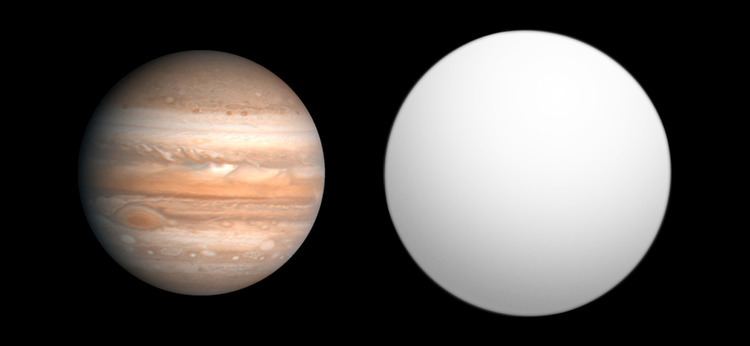Discovery date August 27, 2009 Discovery status Published | Other detection methods Radial velocity | |
 | ||
Discoverer(s) Hellier et al. (SuperWASP) | ||
WASP-18b is an extrasolar planet that is notable for having an orbital period of less than one day. It has a mass equal to 10 Jupiter masses, just below the boundary line between planets and brown dwarfs, about 13 Jupiter masses. Due to tidal deceleration, it is expected to spiral towards and eventually merge with its host star, WASP-18, in less than a million years. The planet is approximately 3.1 million kilometres (1.9 million miles) from its star, which is about 325 light-years from Earth. It was discovered by a team led by Coel Hellier, a professor of astrophysics at Keele University in England.
Scientists at Keele and at the University of Maryland are working to understand whether the discovery of this planet so shortly before its expected demise (with less than 0.1% of its lifetime remaining) was fortuitous, or whether tidal dissipation by WASP-18 is actually much less efficient than astrophysicists typically assume. Observations made over the next decade should yield a measurement of the rate at which WASP-18b's orbit is decaying.
The closest example of a similar situation in the Solar System is Mars' moon Phobos. Phobos orbits Mars at a distance of only about 9,000 km (5,600 mi), 40 times closer than the Moon is to the Earth, and is expected to be destroyed in about eleven million years.
